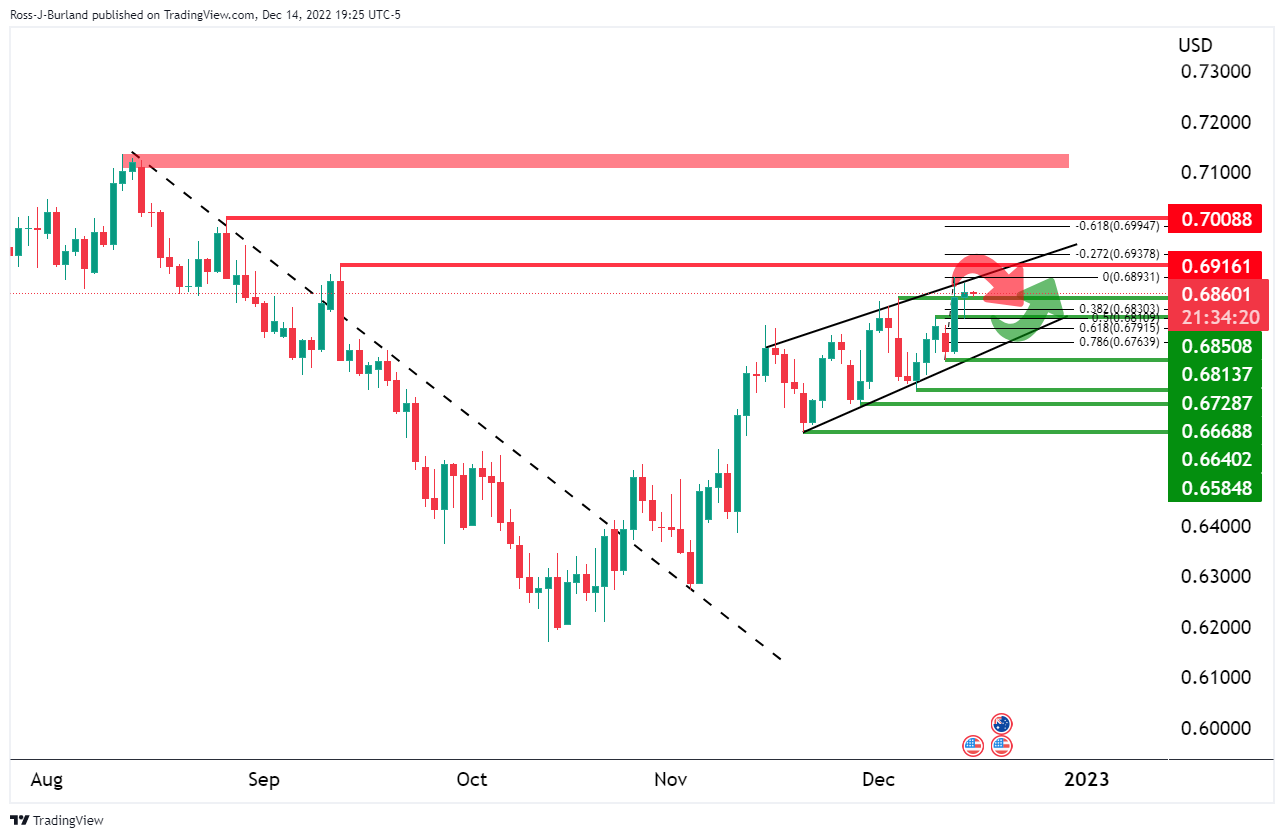- Aussie jobs data beats expectations, AUD robust
Market news
Aussie jobs data beats expectations, AUD robust
The Australian Bureau of Statistics (ABS) published an overview of trends in the Australian labour market as follows:
- Australia Employment Change Nov: 64.0K (est 19.0K; prev 32.2K).
- Unemployment rate +3.4 pct, s/adj (Reuters poll: +3.4)
- Full time employment +34.2k s/adj
- Participation rate +66.8 pct, s/adj (Reuters poll: +66.6 pct)
''Australia employment jumped past all expectations in November while the jobless rate stayed at five-decade lows as more people went looking for work, a sign interest rates may have to rise further to cool the red-hot labour market,'' Reuters reported.
''Figures from the Australian Bureau of Statistics on Thursday showed net employment surged 64,0000 in November from October, when they jumped 43,100, and blew away forecasts for an increase of just 19,000.
The jobless rate held at 3.4%, though only because the participation rate popped up to match the record peak of 66.8%.''
AUD/USD update
After an initial move lower on the Federal Reserve, AUD/USD finished relatively flat for the US session. It was trading at 0.6860 ahead of the Aussie jobs data, testing the resistance of the bullish channel on the daily chart as follows:


The W-formation is a reversion pattern where the price would be expected to move into the neckline as a potential support area. In the case above, we have the 50% mean reversion and a 61.8% ratio aligned with the neckline area of the pattern near 0.6800. However, the jobs data was robust and there has been no material shift to the downside as of yet. 0.6650 support needs to give.
About Aussie labour market data
The Australian Bureau of Statistics (ABS) publishes an overview of trends in the Australian labour market, with the unemployment rate a closely watched indicator. It is released about 15 days after the month's end and throws light on the overall economic conditions, as it is highly correlated to consumer spending and inflation. Despite the lagging nature of the indicator, it affects the Reserve Bank of Australia’s (RBA) interest rate decisions, in turn, moving the Australian dollar. The upbeat figure tends to be AUD-positive.